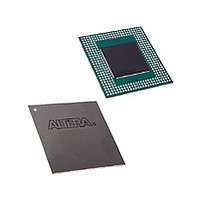EPF10K50VBC356-1 Altera, EPF10K50VBC356-1 Datasheet - Page 20

EPF10K50VBC356-1
Manufacturer Part Number
EPF10K50VBC356-1
Description
FLEX 10KA
Manufacturer
Altera
Datasheet
1.EPF10K50VBC356-1.pdf
(128 pages)
Specifications of EPF10K50VBC356-1
Family Name
FLEX 10K
Number Of Usable Gates
50000
Number Of Logic Blocks/elements
2880
# Registers
930
# I/os (max)
274
Frequency (max)
250MHz
Process Technology
CMOS
Operating Supply Voltage (typ)
3.3V
Logic Cells
2880
Ram Bits
20480
Device System Gates
116000
Operating Supply Voltage (min)
3V
Operating Supply Voltage (max)
3.6V
Operating Temp Range
0C to 70C
Operating Temperature Classification
Commercial
Mounting
Surface Mount
Pin Count
356
Package Type
BGA
Lead Free Status / Rohs Status
Not Compliant
Available stocks
Company
Part Number
Manufacturer
Quantity
Price
Part Number:
EPF10K50VBC356-1
Manufacturer:
ALTERA/阿尔特拉
Quantity:
20 000
Company:
Part Number:
EPF10K50VBC356-1N
Manufacturer:
ALTERA
Quantity:
100
FLEX 10K Embedded Programmable Logic Device Family Data Sheet
Normal Mode
The normal mode is suitable for general logic applications and wide
decoding functions that can take advantage of a cascade chain. In normal
mode, four data inputs from the LAB local interconnect and the carry-in
are inputs to a four-input LUT. The Compiler automatically selects the
carry-in or the DATA3 signal as one of the inputs to the LUT. The LUT
output can be combined with the cascade-in signal to form a cascade chain
through the cascade-out signal. Either the register or the LUT can be used
to drive both the local interconnect and the FastTrack Interconnect at the
same time.
The LUT and the register in the LE can be used independently; this feature
is known as register packing. To support register packing, the LE has two
outputs; one drives the local interconnect and the other drives the
FastTrack Interconnect. The DATA4 signal can drive the register directly,
allowing the LUT to compute a function that is independent of the
registered signal; a three-input function can be computed in the LUT, and
a fourth independent signal can be registered. Alternatively, a four-input
function can be generated, and one of the inputs to this function can be
used to drive the register. The register in a packed LE can still use the clock
enable, clear, and preset signals in the LE. In a packed LE, the register can
drive the FastTrack Interconnect while the LUT drives the local
interconnect, or vice versa.
Arithmetic Mode
The arithmetic mode offers 2 three-input LUTs that are ideal for
implementing adders, accumulators, and comparators. One LUT
computes a three-input function, and the other generates a carry output.
As shown in
Figure 9
on page 19, the first LUT uses the carry-in signal and
two data inputs from the LAB local interconnect to generate a
combinatorial or registered output. For example, in an adder, this output
is the sum of three signals: a, b, and carry-in. The second LUT uses the
same three signals to generate a carry-out signal, thereby creating a carry
chain. The arithmetic mode also supports simultaneous use of the cascade
chain.
20
Altera Corporation














